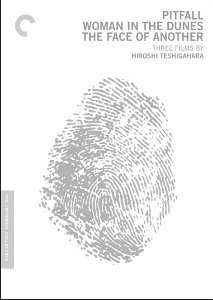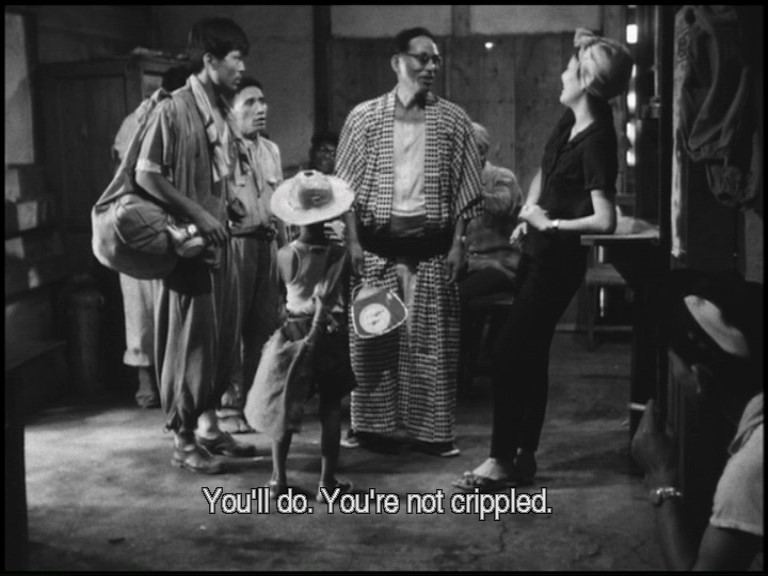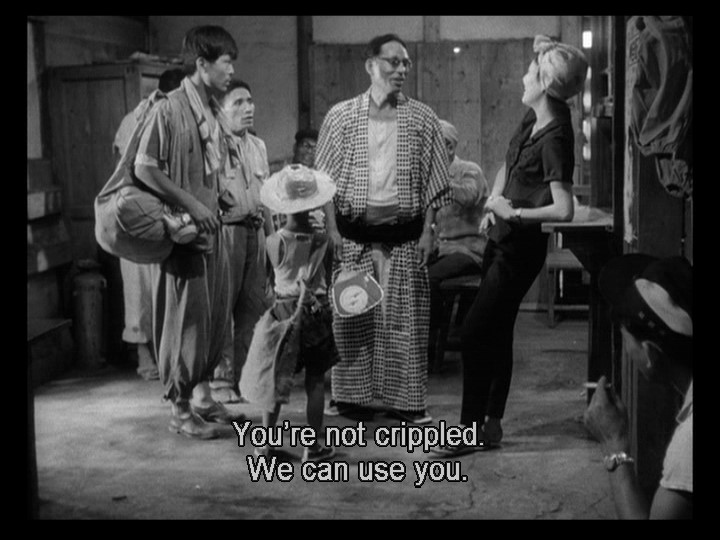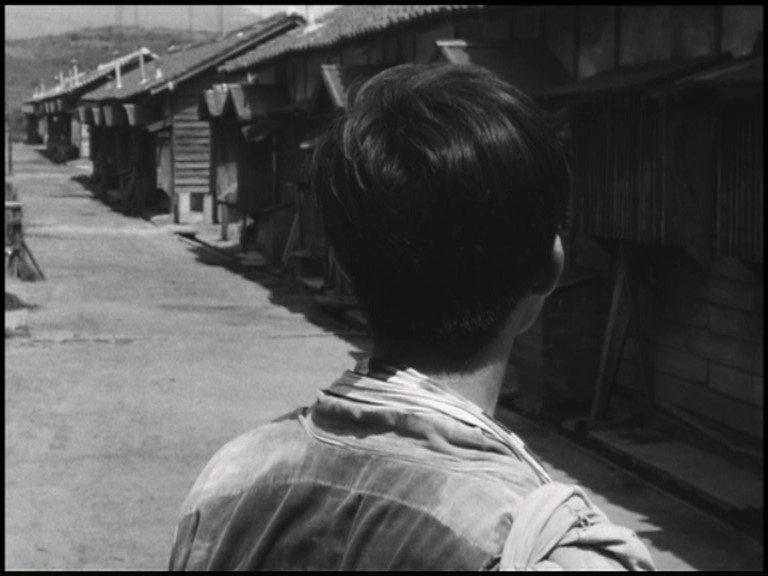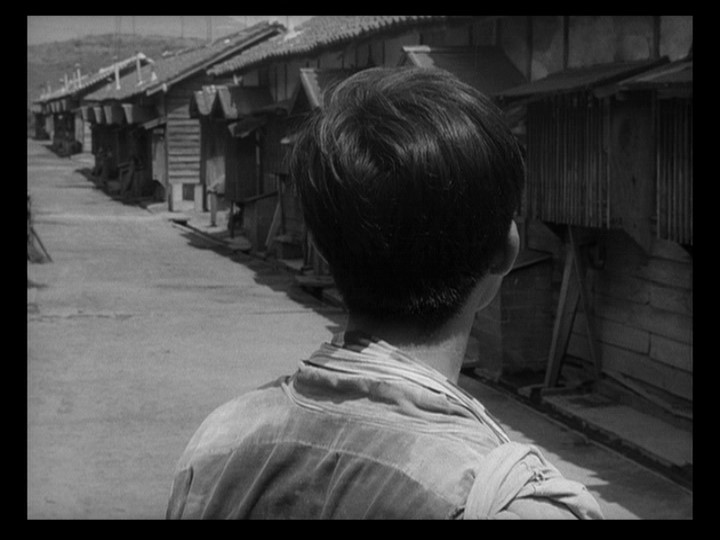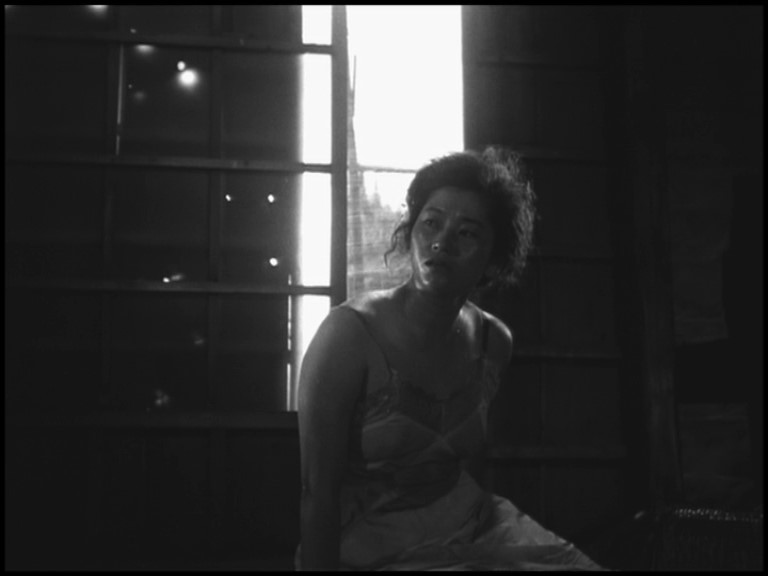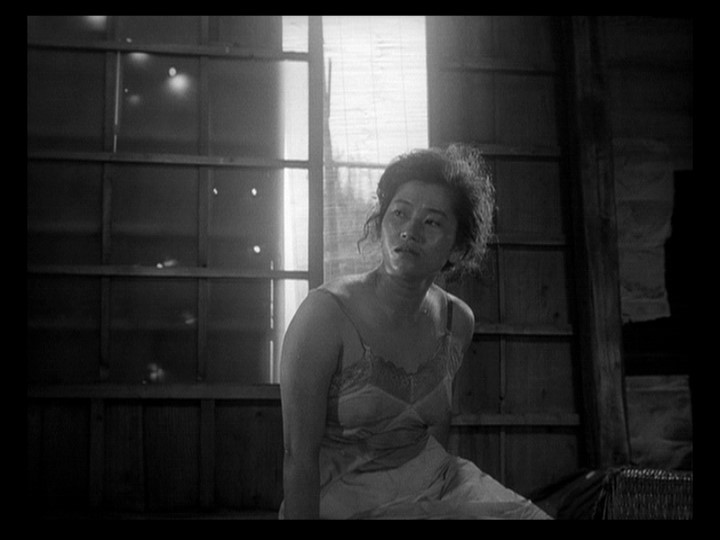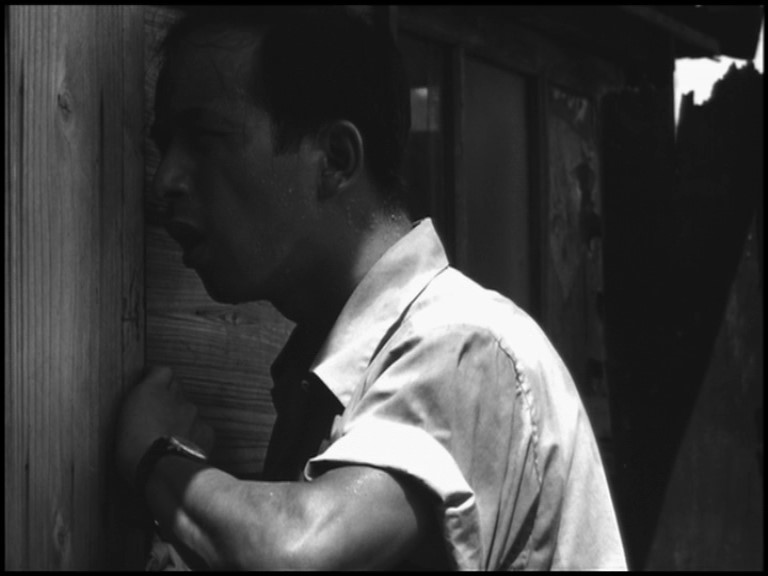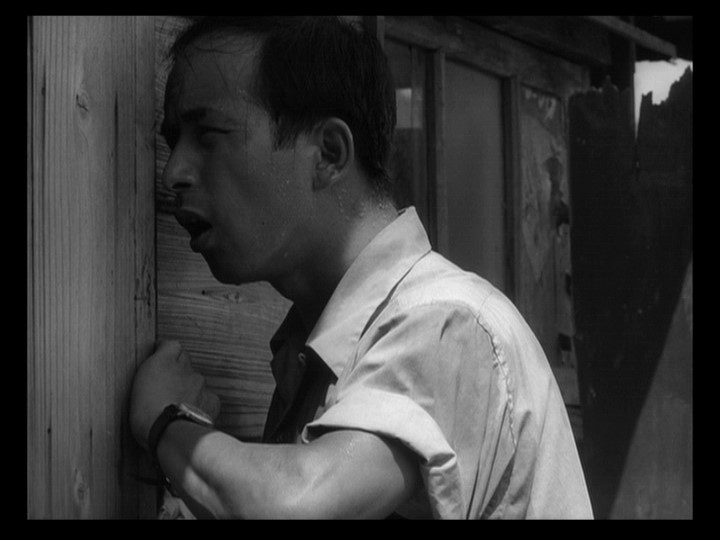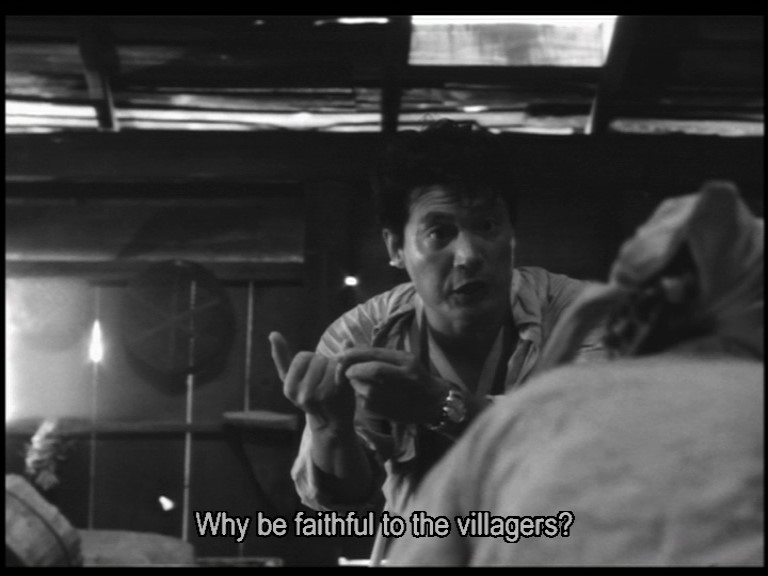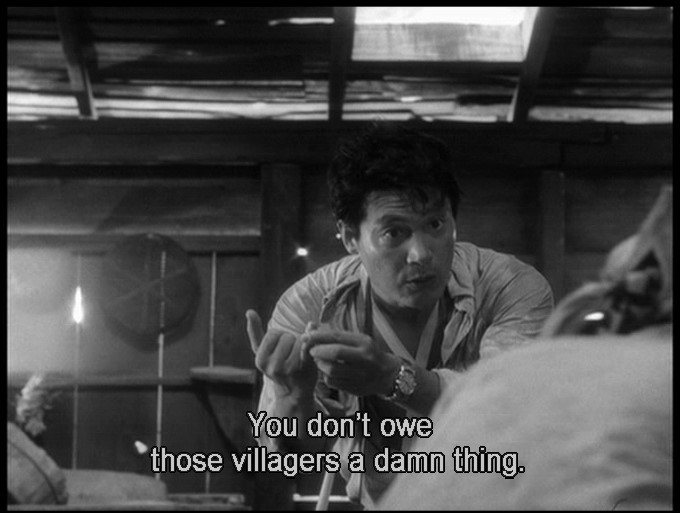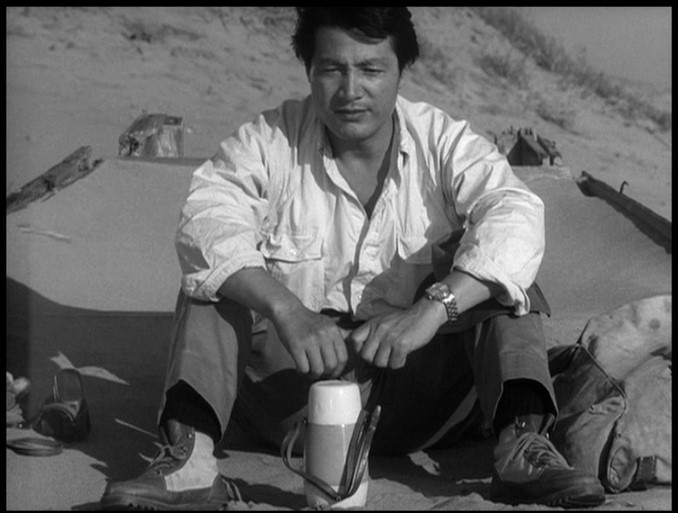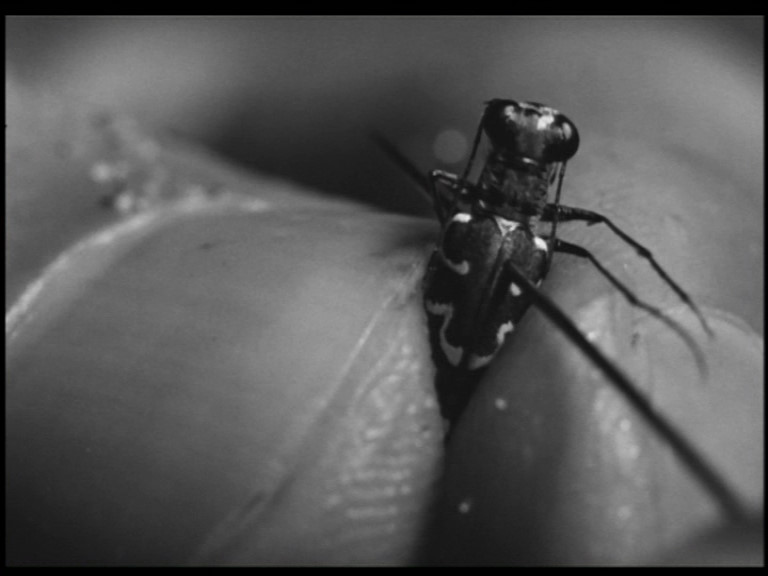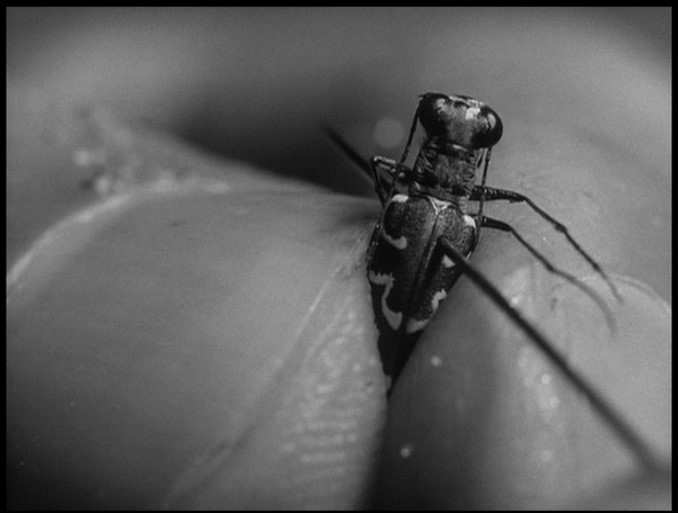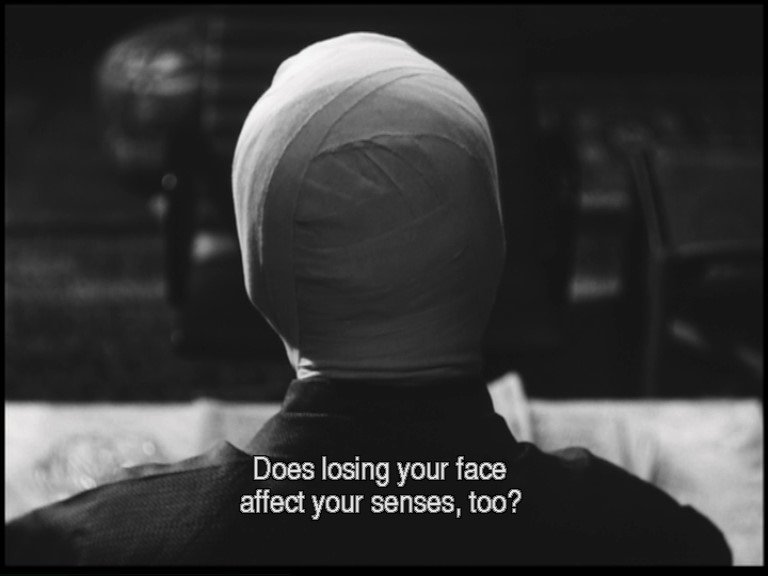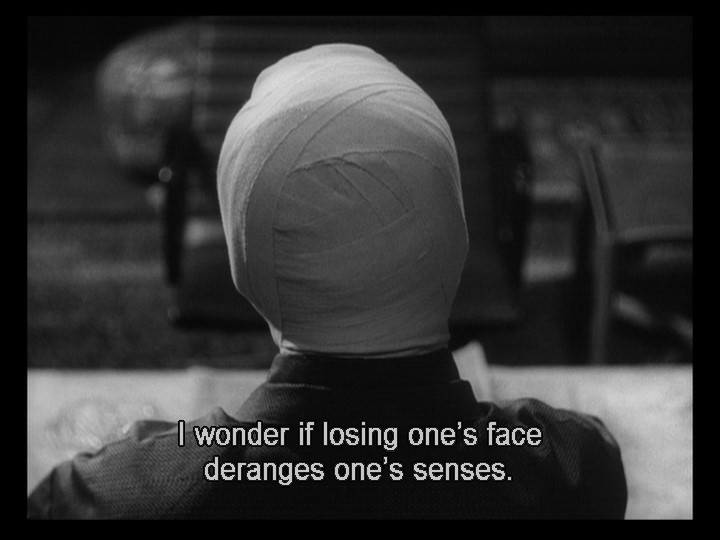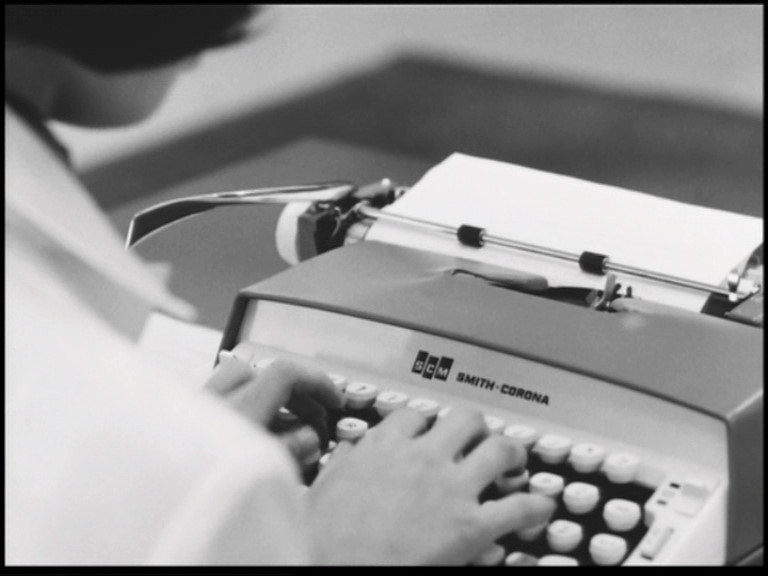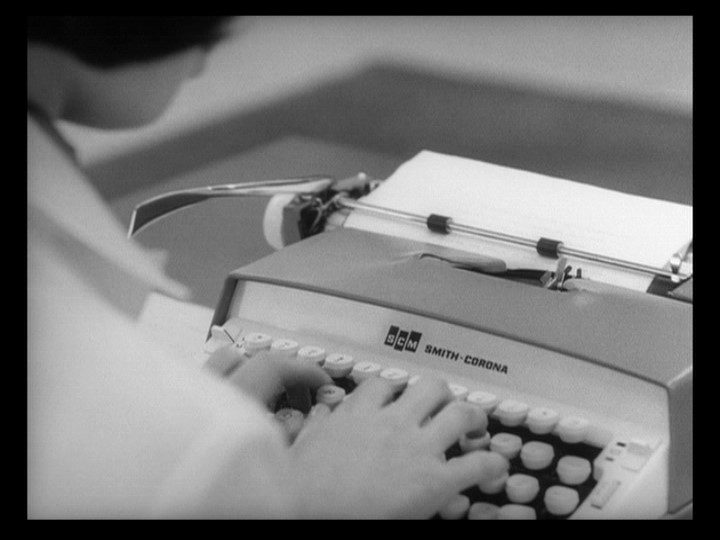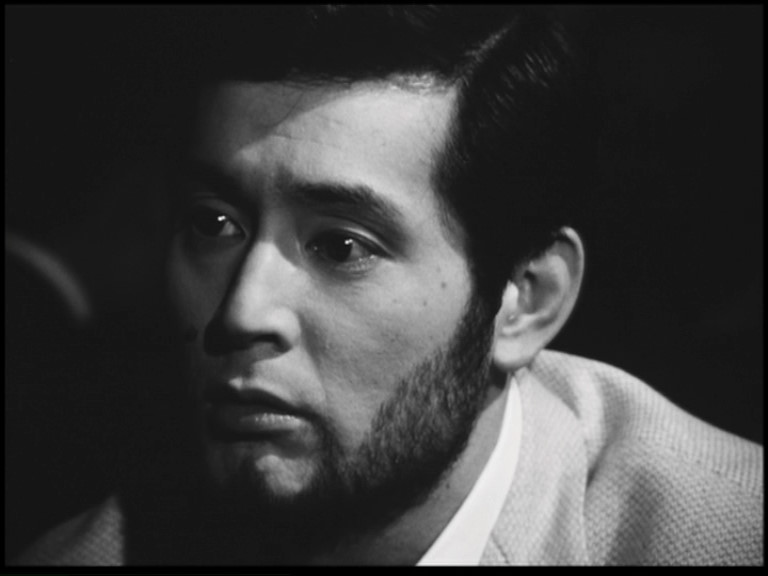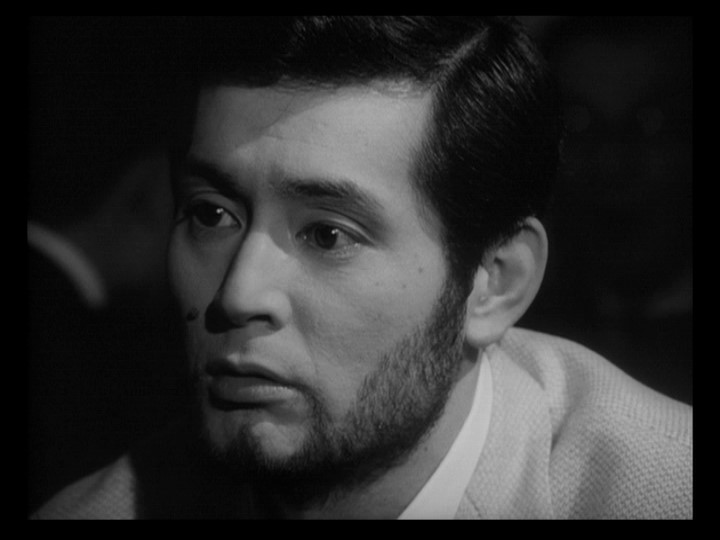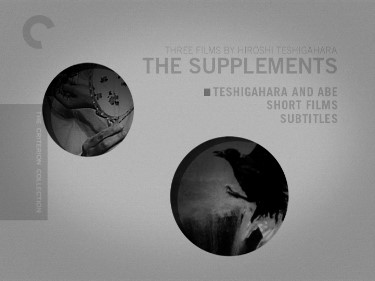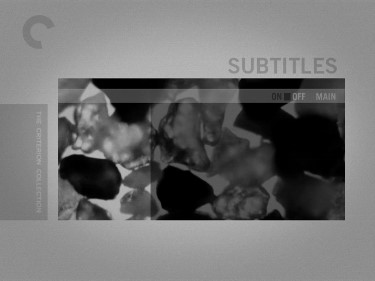![]()
![]()

![]()
![]()
|
Search DVDBeaver |
S E A R C H D V D B e a v e r |
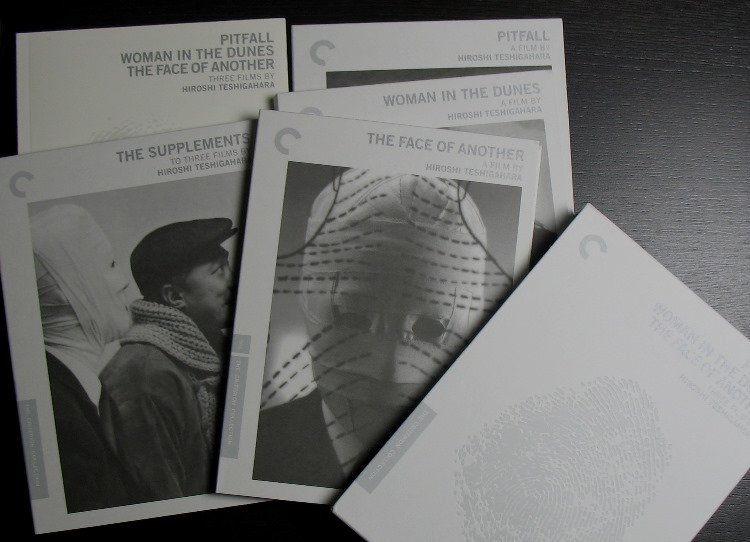 |
Three Films By Hiroshi Teshigahara
Pitfall Woman In The Dunes The Face Of Another Supplements Disc
One of the most acclaimed Japanese directors of all time, Hiroshi Teshigahara distinguished himself in the sixties with a series of sinuous, atmospheric, and daring films. Teshigahara found his spiritual partner in novelist and screenwriter Kobo Abe, with whom he collaborated on these Kafkaesque portraits of identities in peril, films that captivated mainstream audiences while also touching the edges of the Japanese avant-garde. The existential ghost story Pitfall (Otoshiana), the shocking, erotic fable Woman in the Dunes (Sunna no onna), and the sci-fi–tinged nightmare The Face of Another (Tanin no kao) are among cinema’s enduring enigmas and rarest pleasures.
DVD Review:
Criterion - Three Films By Hiroshi Teshigahara - Region 1 - NTSC
| DVD Box Covers |
|
| Distribution | Criterion Collection -
Spine # 392 Region 1 - NTSC |
| Runtime | Respectively: 1:37:09 + 2:27:00 + 2:01:48 |
| Bitrate: Pitfall |
 |
| Bitrate:
Woman in the Dunes |
 |
| Bitrate:
The Face of Another |
 |
| Video |
4:3 Full Screen (Standard) - 1.33:1 Average Bitrate: 7.1 mb/s |
| Audio | Japanese (Dolby Digital 1.0) |
| Subtitles | English, none |
|
Features |
Release Information:
Aspect Ratio: 1.33:1 Edition Details: • Video essays on all three films by critic and festival programmer James Quandt • Four short films by Hiroshi Teshigahara: Hokusai (1953), Ikebana (1956), Tokyo 1958 (1958), and Ako/White Morning (1963) • 35 minute documentary about the working relationship between Teshigahara and Kobo Abe, including interviews with Japanese-film scholars Donald Richie and Tadao Sato • 66-page booklet featuring essays by James Quandt, Howard Hampton, Audie Bock, and Peter Grilli and Max Tessier’s 1964 interview with Teshigahara DVD Release Date:
July 10th, 2007 Chapters 22, 27, 21 |
| Comments: |
The Criterion DVD is pictureboxed (see our description of 'pictureboxing' in our Kind Hearts and Coronets review), so it immediately gives up some resolution to the compared PAL DVDs - BFI and Masters of Cinema - (than simply the standard difference). Still though, the Criterion transfer appears superior - sharper and cleaner - much improved contrast. With the framing - Criterion appears to have some cropped - mostly from the left edge. The Criterion exhibits some minor contrast flickering but other than that the three dual-layered, progressive transfers are quite excellent. They are all in their original 1.33:1 aspect ratio, have mono Japanese audio and optional English subtitles that vary somewhat from the corresponding PAL editions. Generally I would say they were more complete but I have no working knowledge of Japanese to support that feeling - they appeared a shade more detailed (see samples below).
Supplements include excellent video essays by James Quandt for each film
(on their appropriate discs). They represent a very good way of
connecting what you have seen in the film together with some vital
information about the director, the time they were made and that movies
production. These individual discs also contain theatrical trailers for
the film it is sharing the DVD with. There is a fourth dual-layered disc of supplements. It contains a 35
minute documentary about the working relationship between Teshigahara
and Kobo Abe, fittingly entitled
Teshigahara and Abe. It
includes interviews with Japanese-film scholars Donald Richie,Tadao Sato
and others. Plus we are blessed with four unrestored short films by
director Teshigahara: Hokusai (1953), Ikebana (1956),
Tokyo 1958 (1958), and Ako/White Morning (1963). They range
from 23 minutes to 32 minutes long. Film scholars will be appreciative
of these inclusions as they would be very hard to see outside of Japan. Of course, many were anticipating this set for Woman in the Dunes
and they will be richly rewarded if they have not had a chance to see
the other two features. the only thing missing are commentaries but the
video essays make up for that quite adequately. At the time of this
review it is listed at 31% off and we strongly recommend purchasing!
|
(aka 'Otoshiana' or 'Kashi to kodomo" or "The Pitfall')
directed by
Hiroshi Teshigahara
Japan 1962
When a miner leaves his employers and treks out with his young son to become a migrant worker, he finds himself moving from one eerie landscape to another, intermittently followed (and photographed) by an enigmatic man in a clean white suit, and eventually coming face to face with his inescapable destiny. Hiroshi Teshigahara’s debut feature and first collaboration with novelist Kobo Abe, Pitfall is many things: a mysterious, unsettling ghost story, a portrait of human alienation, and a compellingly surreal critique of soulless industry, shot in elegant black-and-white.
****
Teshigahara's debut feature, Pitfall [Otoshiana], was the first of his collaborations with novelist/playwright Kobo Abe and composer Toru Takemitsu. Beautifully filmed in an abandoned, postwar coal-mining town in Western Japan, it is part social-realist critique, part unsettling ghost fable. Examining themes of alienation, workers' rights, and identity, Teshigahara and Abe's exotically strange film evokes the cinema of Antonioni, Resnais, the writing of Kafka, Beckett, Carroll, and the French existentialists.
A wandering miner, looking for work with his young son, is pursued by a mysterious, silent assassin in a white suit and hat. As mistrust and killings spread through the barely populated, rundown mining community, ghosts of the dead appear, unheard by the living, yet imploring them for answers. Who is the man in white and why does he sow confusion?
Teshigahara coined the term "documentary fantasy" for this study of the powerless, impoverished worker in postwar Japan.
Excerpt from the Eureka Website
Theatrical Release: 1962 - Japan
DVD Menus
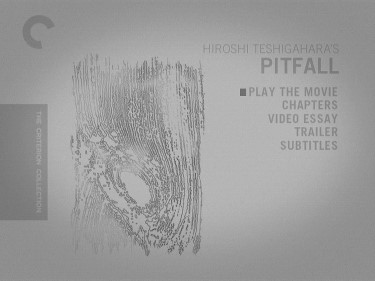 |
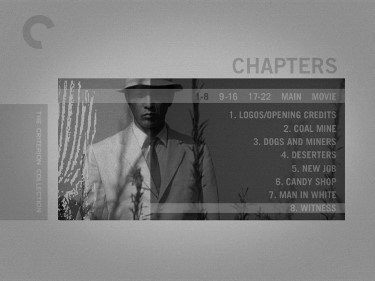 |
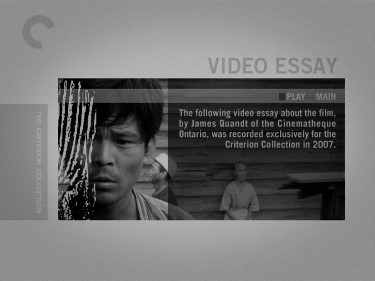 |
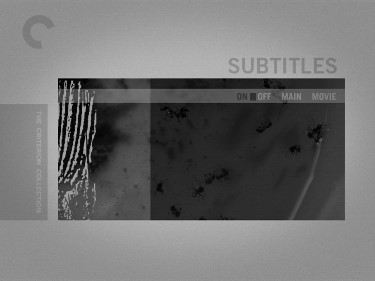 |
(Eureka-Masters of Cinema - Region 2 - PAL TOP vs. Criterion (from Three Films By Hiroshi Teshigahara Boxset) Region 1 - NTSC BOTTOM)
|
|
|
|
(Eureka-Masters of Cinema - Region 2 - PAL TOP vs. Criterion (from Three Films By Hiroshi Teshigahara Boxset) Region 1 - NTSC BOTTOM)
|
|
|
|
(Eureka-Masters of Cinema - Region 2 - PAL TOP vs. Criterion (from Three Films By Hiroshi Teshigahara Boxset) Region 1 - NTSC BOTTOM)
|
|
|
|
(Eureka-Masters of Cinema - Region 2 - PAL TOP vs. Criterion (from Three Films By Hiroshi Teshigahara Boxset) Region 1 - NTSC BOTTOM)
|
|
|
|

(aka "Woman in the Dunes" or 'Woman of the Dunes')
directed
by Hiroshi Teshigahara
Japan 1964
One of the sixties' great international art-house sensations, Woman in the Dunes was for many the grand unveiling of the surreal, idiosyncratic worldview of Hiroshi Teshigahara. Eija Okada plays an amateur entomologist who has left Tokyo to study an unclassified species of beetle that resides in a remote, vast desert; when he misses his bus back to civilization, he is persuaded to spend the night in the home of a young widow (Kiyoko Kishida) who lives in a hut at the bottom of a sand dune. What results is one of cinema’s most bristling, unnerving, and palpably erotic battles of the sexes, as well as a nightmarish depiction of everyday Sisyphean struggle, for which Teshigahara received an Academy Award nomination for best director.
***
"Some desert-region villagers trick an innocent entomologist named Niki Jumpei into captivity under the pretense of “local hospitality”. He joins a young widow in a small shack within a pit in their desert community unable to extricate himself. If the wooden house were left un-cleared of constantly falling sand, its being buried would have a domino effect on other homes within the small village also being completely covered. Against his will, Niki is positioned as a helper and companion to the widow. His major goal is to escape his captivity and goldfish-bowl existence as the villagers peer down on them while controlling their food, water and exposure to the outside world.
Once his escape and hopeful rescue seem remote, he does as best he can to pursue his scientific research goals while maintaining a close companionship, which eventually turns sexual, with the "Woman" ( played by Kyōko Kishida ). The constant black and white contrasts of lightly dusted skin, shifting sands, shadows and insects are exemplified by some wonderfully framed shots (very Kurosawa-like), and add to this films wonderful viewing experience. The captives sparse "rationed" living conditions are reflected very aptly in the geographical environment."
The most obvious comparison one could make to subtle event themes within
"Woman in the Dunes", is that of isolation and captivity. Expressed not only in
the major characters but in the constant references to insects; analyzed and
imprisoned, pertaining to his research... the very reason he is in the desert
village in the first place.
This offering is unique and an
extremely gratifying cinematic experience. I recommend it to all.
Gary W. Tooze
Posters
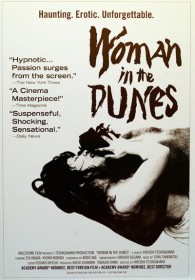 |
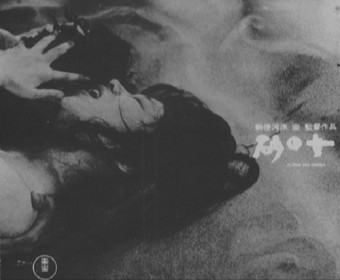 |
Reviews More Reviews DVD Reviews
Recommended Reading for Japanese Film Fans (CLICK COVERS or TITLES for more information)
 |
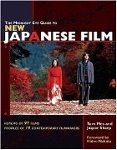 |
 |
 |
 |
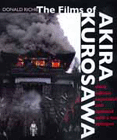 |
 |
|
The Japan Journals : 1947-2004, by Donald Richie |
The Midnight Eye Guide to New Japanese Film by Tom Mes and Jasper Sharp |
Kon Ichikawa (Cinematheque Ontario Monographs) by James Quandt, Cinematheque Ontario |
Shohei Imamura (Cinematheque
Ontario Monographs, No. 1) by James Quandt |
Eros Plus Massacre: An
Introduction to the Japanese New Wave Cinema
(Midland Book, Mb 469) by David Desser |
The Films of Akira Kurosawa by Donald Ritchie | A Hundred Years of Japanese Film by Donald Richie |
Check out more in "The Library"
DVD Menus
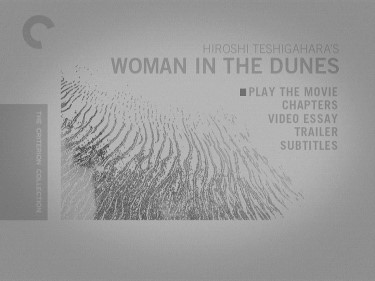 |
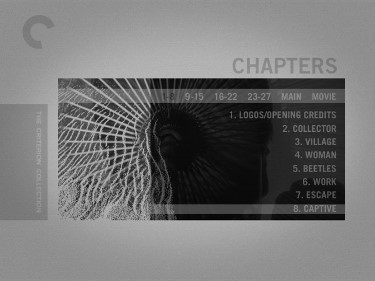 |
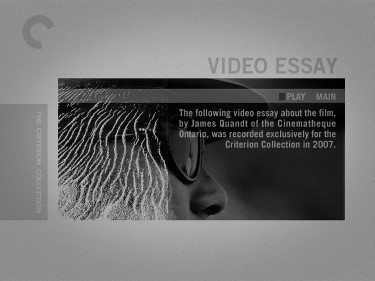 |
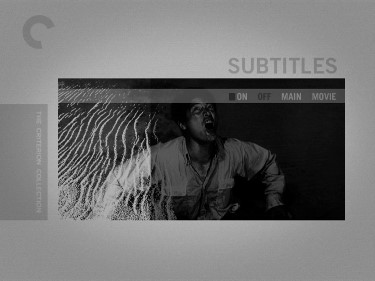 |
(BFI - Region 2 - PAL TOP vs. Criterion (from Three Films By Hiroshi Teshigahara Boxset) Region 1 - NTSC BOTTOM)
|
|
|
|
(BFI - Region 2 - PAL TOP vs. Criterion (from Three Films By Hiroshi Teshigahara Boxset) Region 1 - NTSC BOTTOM)
|
|
|
|
(BFI - Region 2 - PAL TOP vs. Criterion (from Three Films By Hiroshi Teshigahara Boxset) Region 1 - NTSC BOTTOM)
|
|
|
|

(aka "Tanin no kao" or "I Have a Stranger's Face" or "Stranger's Face" or "The Face of Another")
directed by Hiroshi Teshigahara
Japan 1966
A staggering work of existential science fiction, The Face of Another dissects identity with the sure hand of a surgeon. Okuyama (Yojimbo’s Tatsuya Nakadai), after being burned and disfigured in an industrial accident and estranged from his family and friends, agrees to his psychiatrist’s radical new experiment: a face transplant, created from the mold of a stranger. As Okuyama is thus further alienated from the strange world around him, he finds himself giving in to his darker temptations. With unforgettable imagery, Teshigahara’s film explores both the limits and freedom in acquiring a new persona, and questions the notion of individuality itself.
*****
Following
Woman of the Dunes [Suna no onna]
in 1964, Hiroshi Teshigahara continued his collaboration
with avant-garde novelist/playwright Kobo Abe and experimental
composer Toru Takemitsu for The Face of Another [Tanin no kao].
Starring Tatsuya Nakadai (Yojimbo, Kagemusha) as a man "buried alive
behind eyes without a face", the film addresses the illusive nature
of identity and the agony of its absence.
A man (Nakadai) facially disfigured in a laboratory fire persuades
his doctor to fashion him a lifelike mask modeled on a complete
stranger — totally different from his own face. Shortly after the
mask is made, he successfully seduces his own wife (Machiko Kyo) but
becomes angry at her falling for a handsome stranger. Worrying about
his looks, and the way the mask seems to influence his identity, he
begins to question everything.
Takemitsu's musical score is one of his best, contrasting sweet, sad
melodies with eerie, experimental motifs. Alongside Franju's Les
Yeux sans visage [Eyes
Without a Face], Mamoulian's
Dr. Jekyll and Mr. Hyde,
Whale's Frankenstein, and Freund's Mad Love, Teshigahara and
Abe's The Face of Another stands proud as one of cinema's
most haunting explorations of identity.
Excerpt from the Eureka Website
Theatrical Release: July 15th, 1966 - Japan
DVD Menus
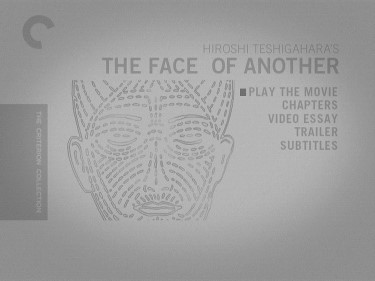 |
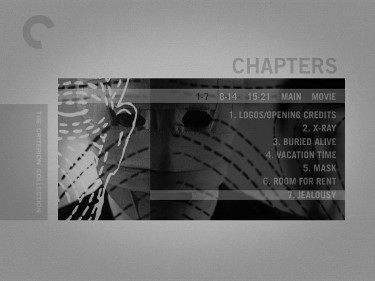 |
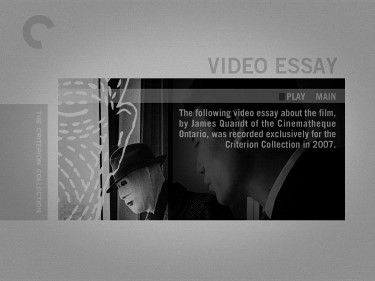 |
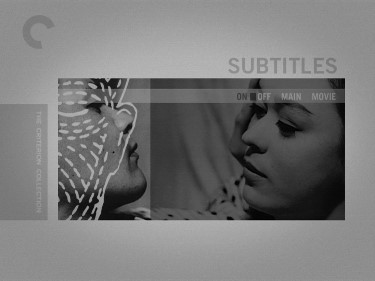 |
(Eureka-Masters of Cinema - Region 2 - PAL TOP vs. Criterion (from Three Films By Hiroshi Teshigahara Boxset) Region 1 - NTSC BOTTOM)
|
|
|
|
(Eureka-Masters of Cinema - Region 2 - PAL TOP vs. Criterion (from Three Films By Hiroshi Teshigahara Boxset) Region 1 - NTSC BOTTOM)
|
|
|
|
(Eureka-Masters of Cinema - Region 2 - PAL TOP vs. Criterion (from Three Films By Hiroshi Teshigahara Boxset) Region 1 - NTSC BOTTOM)
|
|
|
|
Supplements Disc
|
|
|
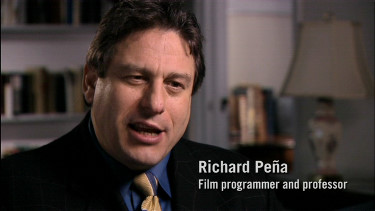 |
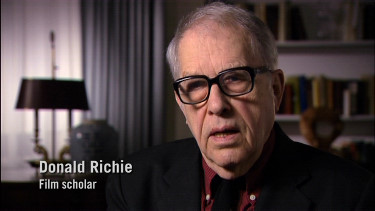 |
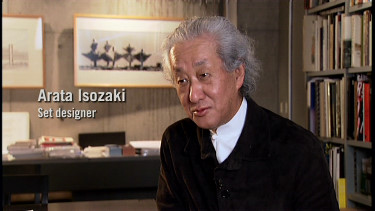 |
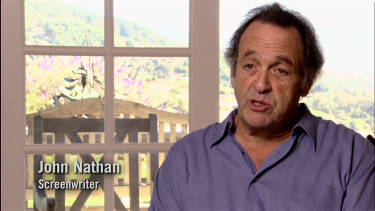 |
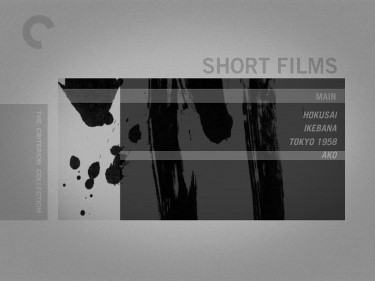 |
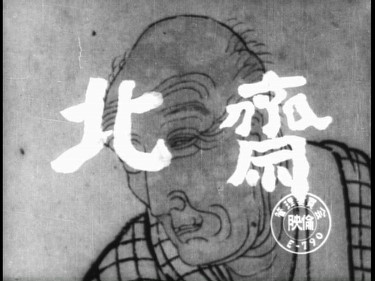 |
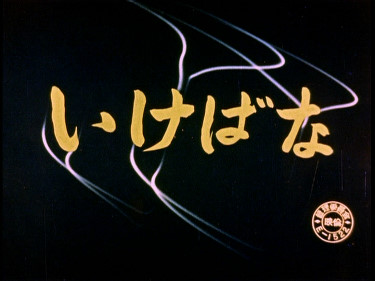 |
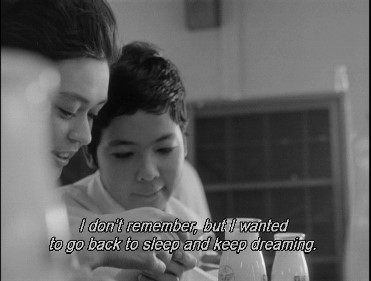 |
| DVD Box Covers |
|
| Distribution | Criterion Collection -
Spine # 392 Region 1 - NTSC |
![]()
![]()
![]()
![]()

